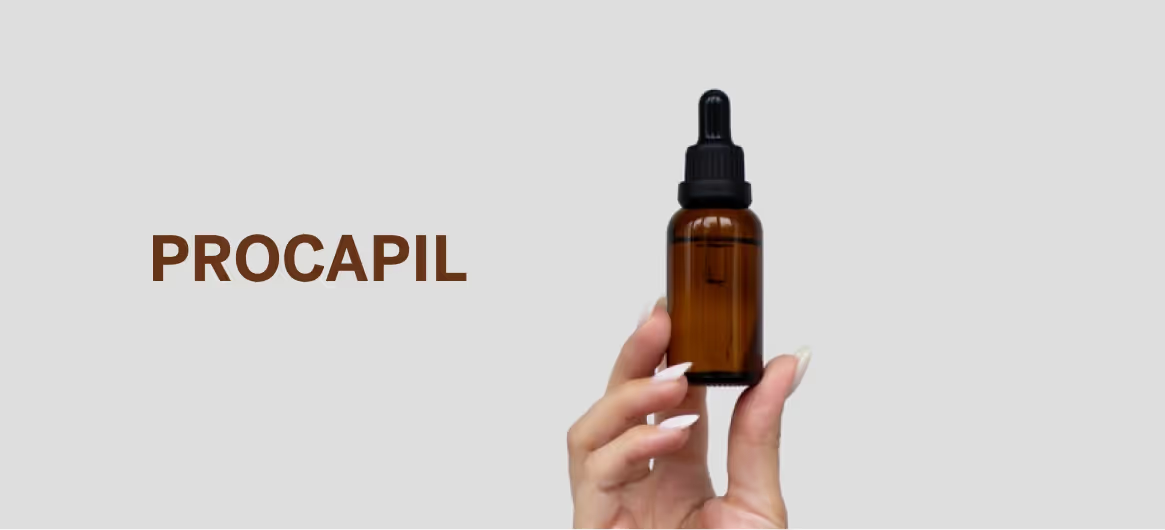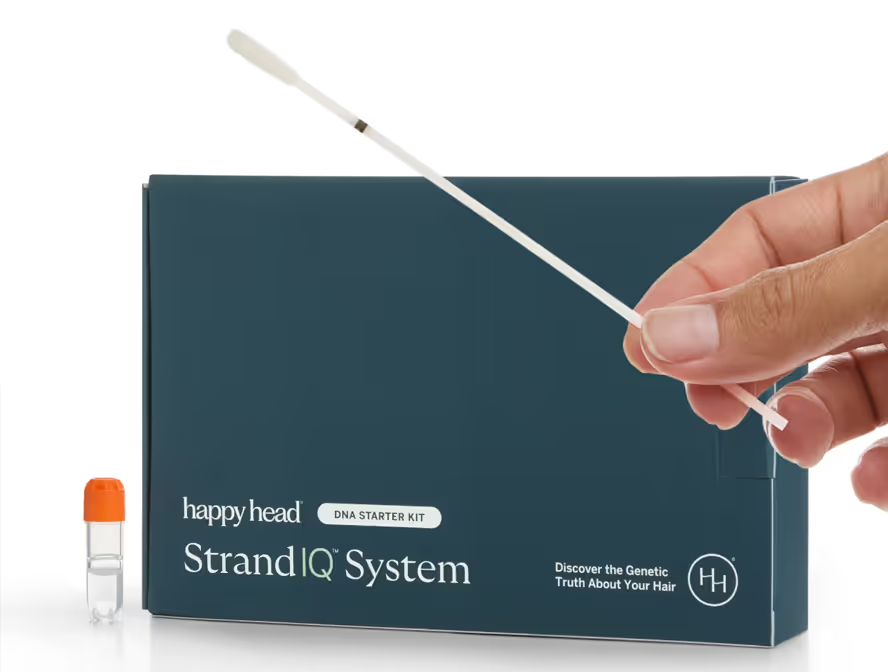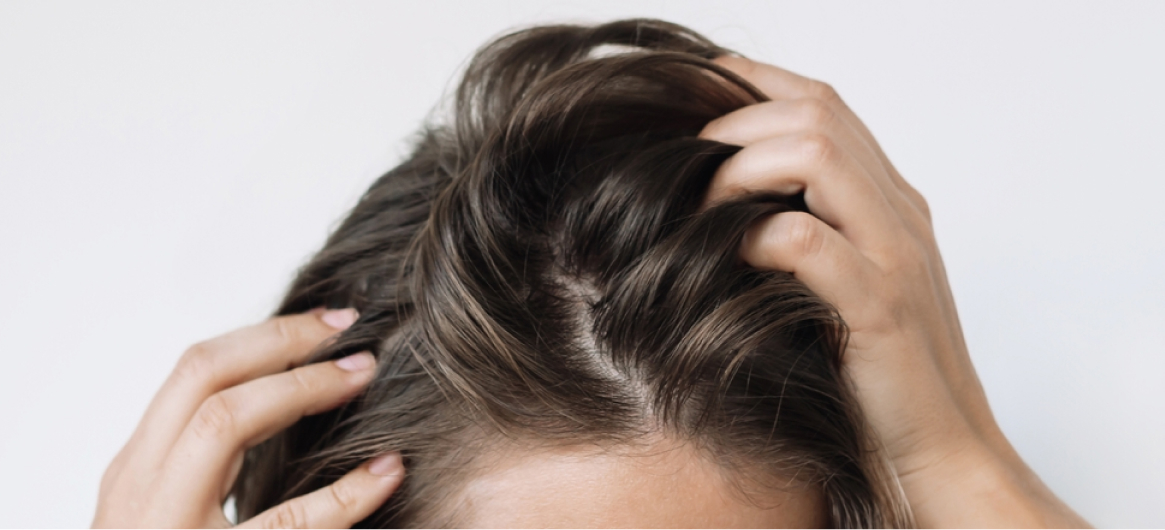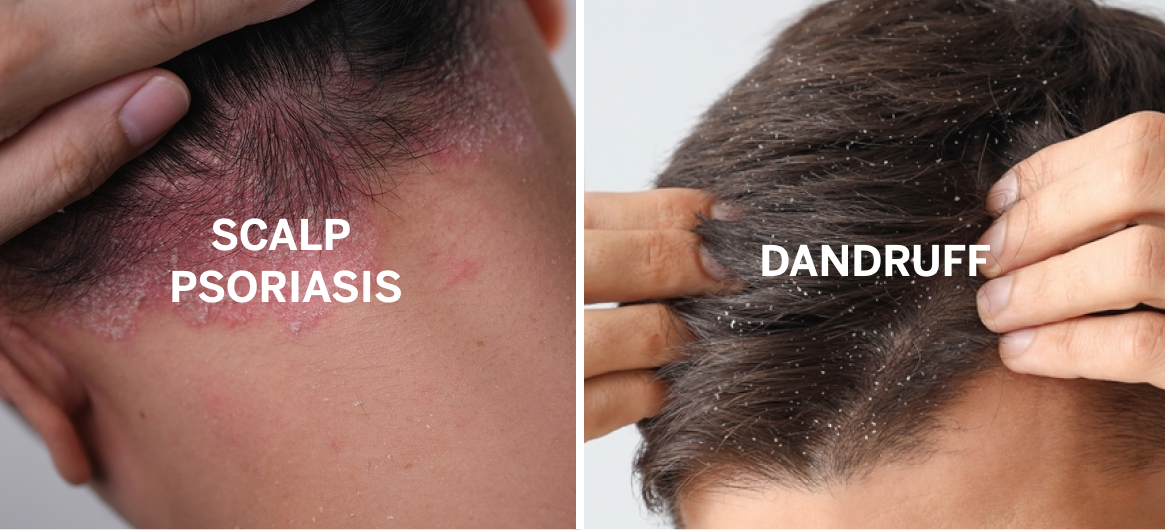Procapil for hair growth is a gentle yet science-backed alternative to harsh medications and invasive procedures for those dealing with hair thinning and loss.
Derived from natural ingredients and supported by targeted biological mechanisms, it offers a multi-faceted approach to strengthening hair and reducing shedding, but with so many treatments on the market, it can be difficult to know which ones are worth your time and trust.
This guide explores how Procapil works, its benefits, and whether it could be the right solution for your hair loss or if it could complement a comprehensive dermatologist-guided approach.
What Is Procapil and How Does It Work for Hair Growth?
Procapil is a proprietary, plant-based compound developed by Sederma, a French cosmetic research company. It’s designed to combat hair loss and support healthy hair growth by targeting three key factors: poor scalp circulation, follicle aging, and DHT sensitivity.
Procapil is composed of a blend of botanical ingredients, including a vitaminated matrikine (biotinyl-GHK), apigenin (a flavonoid found in citrus), and oleanolic acid (extracted from olive tree leaves).
Together, these ingredients work synergistically to strengthen the hair follicle, improve anchoring of the hair strand, and revitalize thinning areas.
Procapil is most commonly found in topical formulations, such as serums, tonics, and shampoos, and is frequently used as a cosmetic alternative or complement to traditional hair loss medications.
Key Ingredients in Procapil
Procapil is made up of three main active ingredients:
- Biotinyl-GHK: A vitaminated peptide that promotes hair anchoring and improves follicle strength.
- Apigenin: A flavonoid that enhances blood circulation in the scalp, promoting nutrient delivery to hair roots.
- Oleanolic Acid: Derived from olive leaves, oleanolic acid helps inhibit 5-alpha-reductase, the enzyme that converts testosterone into DHT—a primary contributor to androgenetic hair loss.
These components work together to target the biological causes of hair thinning without the use of synthetic drugs.
How Procapil Supports Natural Hair Growth
Procapil promotes natural hair growth by addressing three core mechanisms: reducing follicular miniaturization, enhancing microcirculation in the scalp, and strengthening the extracellular matrix that holds the hair in place.
By increasing blood flow, more oxygen and nutrients reach the hair follicles, which can extend the anagen (growth) phase of the hair cycle. At the same time, Procapil's DHT-blocking action helps protect against hormonal hair loss.
This dual-action support helps to prevent shedding and encourages the regrowth of thicker, healthier hair over time, especially when used consistently and as part of a dermatologist-guided regimen.
Benefits of Procapil for Hair Growth
Procapil offers a multi-targeted approach to hair restoration by addressing several underlying causes of hair thinning. Unlike single-action treatments, it combines scalp nourishment, follicle reinforcement, and hormonal protection into one topical solution.
While results vary, many users experience noticeable improvements in hair density and scalp health when used consistently. Below are the key benefits that make Procapil a promising ingredient in the fight against hair loss.
Reduces Hair Loss and Thinning
Procapil helps reduce hair loss by strengthening the anchoring structure of the hair follicle and extending the hair’s growth (anagen) phase.
The biotinyl-GHK component fortifies the dermal papilla, making it less likely for hairs to shed prematurely. Apigenin improves scalp microcirculation, ensuring that follicles receive vital nutrients and oxygen.
Users may experience a measurable decrease in hair loss within several weeks of regular use. This benefit makes Procapil especially useful in early-stage androgenetic alopecia or as a supportive therapy for general hair thinning.
Blocks DHT and Protects Hair Follicles
One of Procapil’s standout features is its ability to inhibit the activity of 5-alpha reductase, the enzyme responsible for converting testosterone to dihydrotestosterone (DHT). Elevated DHT levels shrink hair follicles over time, leading to miniaturization and eventual hair loss.
Oleanolic acid, a natural DHT blocker derived from olive leaves, helps counter this process. By limiting DHT’s damaging effects, Procapil helps those with hormone-related hair thinning preserve follicle size and function, allowing hair to grow longer, thicker, and healthier.
Improves Scalp Health and Hair Strength
Healthy hair starts with a healthy scalp, and Procapil supports both.
Apigenin enhances blood flow to the scalp, which improves nutrient delivery and cellular repair. Biotinyl-GHK stimulates the production of structural proteins such as collagen and keratin, both of which are essential for hair shaft strength and integrity.
This combination can lead to stronger, more resilient hair that is less prone to breakage and shedding.
Additionally, many Procapil-based products include moisturizing agents that soothe irritation and improve the overall condition of the scalp, creating an optimal environment for hair growth.
When Do Dermatologists Recommend Procapil for Hair Growth?
Dermatologists often recommend Procapil for patients experiencing early signs of hair thinning, mild androgenetic alopecia, or seasonal shedding. It’s particularly suitable for those seeking a non-drug, low-risk option or for those who can’t tolerate medications like minoxidil or finasteride.
Procapil is also a valuable adjunct therapy for enhancing the effects of more aggressive treatments. It may be suggested for patients with sensitive scalps or for those looking to maintain results after completing prescription-based regimens.
Dermatologists often favor Procapil for its ability to support follicle health without systemic side effects.

Is Procapil Safe for Women and Men?
Procapil is considered safe for both women and men when used as directed. Its plant-based formulation makes it a gentle alternative to hormonal treatments, which may not be appropriate for all users, particularly women of childbearing age.
Unlike oral medications that may have systemic side effects or gender-specific risks, Procapil works topically and locally, minimizing the chance of unwanted reactions.
Both men and women with androgenetic hair loss, general thinning, or a sensitive scalp can use Procapil, although results may vary depending on hormonal factors and severity of hair loss.
Common Side Effects To Watch For
Procapil is generally considered safe for topical use and is well tolerated by most individuals. Because it is derived from natural plant-based ingredients, the risk of serious side effects is low.
However, like any topical formulation, it may cause minor reactions in some users, particularly those with sensitive skin or allergies.
Common side effects include mild scalp redness, itching, tingling, or dryness at the application site. These symptoms are usually temporary and resolve with continued use or dosage adjustment.
Performing a patch test before full application is strongly recommended to help reduce the risk of irritation.
Who Should Avoid Using Procapil?
While Procapil is safe for many people, certain individuals should exercise caution or avoid it altogether. Those with known allergies to olives, citrus-derived flavonoids, or topical peptides should not use products containing Procapil.
People with inflamed, broken, or infected scalp skin should consult a dermatologist before beginning use, as application to compromised skin may worsen irritation.
Additionally, pregnant or breastfeeding women should seek medical guidance before using Procapil, as its effects in these populations haven’t been thoroughly studied.
Anyone with a history of chronic skin conditions or heightened sensitivity should always consult a dermatologist first.
Procapil vs. Other Hair Growth Treatments
When considering a hair growth regimen, it’s important to compare the mechanisms, effectiveness, and potential side effects of available treatments. While Procapil is a non-drug, plant-based option, others, such as minoxidil and Redensyl, offer different modes of action.
Understanding how Procapil stacks up against these alternatives can help you and your dermatologist make informed decisions based on your hair loss pattern, scalp sensitivity, and treatment goals.
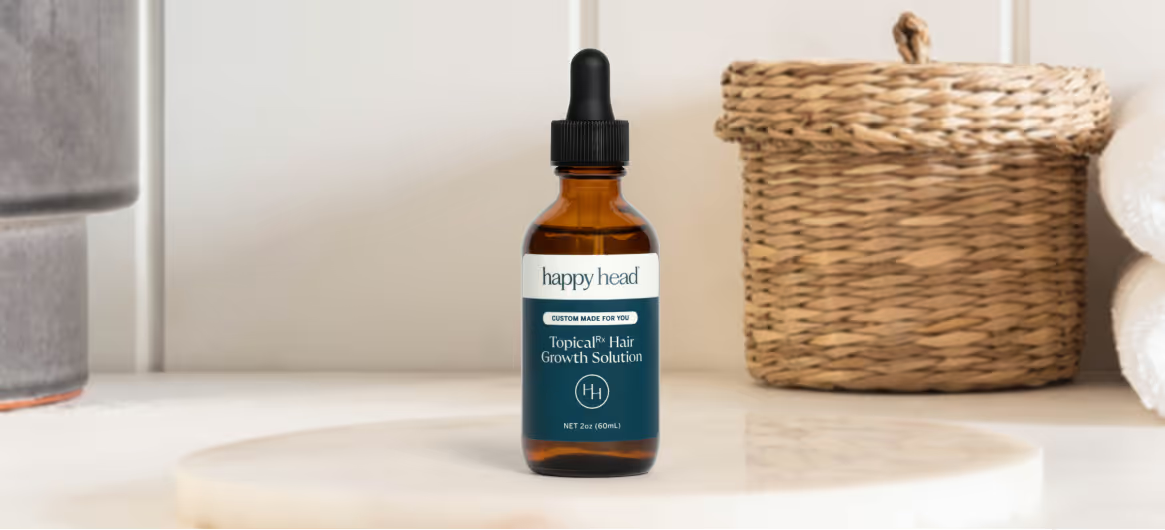
Procapil vs. Minoxidil
Topical minoxidil is an FDA-approved vasodilator that directly stimulates hair follicles and prolongs the anagen phase. Minoxidil is effective for many, but it can cause side effects such as scalp irritation, unwanted facial hair growth, and initial shedding.
Procapil, on the other hand, offers a gentler, multi-targeted approach by improving scalp circulation, strengthening follicles, and blocking DHT.
While Procapil may not deliver results as quickly or dramatically as minoxidil, it’s often better tolerated and can complement minoxidil in combined formulations, especially for those with sensitive skin or who are concerned about medication-based side effects.
Procapil vs. Redensyl
Redensyl is a newer, non-hormonal compound made from plant extracts and patented molecules such as DHQG and EGCG2. It targets stem cells in hair follicles to restart the growth cycle and has shown promising results in early studies.
Procapil takes a broader approach by combining DHT inhibition, vascular support, and follicle anchoring. While both ingredients are non-pharmaceutical and found in over-the-counter products, Procapil has been in use longer and is more widely studied.
Some formulations even include both for synergistic benefits. Choosing between them may depend on your skin’s tolerance and how your hair responds to topical actives.
Procapil vs. Capixyl
Capixyl is a peptide complex that combines acetyl tetrapeptide-3 with red clover extract, a natural DHT blocker. Like Procapil, it targets the root causes of hair loss, including hormonal sensitivity and inflammation.
However, Capixyl is more focused on reducing inflammation and improving ECM (extracellular matrix) protein production around the follicle. Procapil also targets microcirculation and follicle anchoring, giving it a broader range of action.
Both are commonly used in non-prescription serums, and some patients may respond better to one over the other. For many, the choice comes down to ingredient sensitivity, clinical history, or product availability.
Can Procapil Be Combined With Other Treatments?
Yes, Procapil can be safely combined with other hair growth treatments to enhance results. It is often used alongside minoxidil, peptides (like GHK-Cu), and natural DHT blockers such as saw palmetto or Capixyl.
Because Procapil is a non-drug and topical, it typically does not interfere with oral medications or other topicals when layered properly. Combination therapy is especially useful for patients with moderate to advanced hair thinning or those looking to optimize results.
Always consult a dermatologist to ensure the treatment plan is well-coordinated, especially if using prescription-strength products or targeting multiple causes of hair loss.
Introducing Happy Head’s Hair Serum Containing Procapil
Happy Head’s Hair Serum is a lightweight, drug-free solution designed by dermatologists to reduce hair shedding and support thicker, fuller growth using a science-backed blend of natural ingredients.
It features Procapil to block DHT and strengthen follicles alongside Capixyl, Redensyl, and KGF to promote healthier hair from the root.
The serum is enriched with powerful, soothing botanicals such as saw palmetto, seabuckthorn, rosemary, argan oil, keratin, and collagen to nourish the scalp, improve resilience, and enhance daily hair vitality without irritation or buildup.
Because it contains only natural and 100% drug-free ingredients, no prescription is needed. Reach out to our board-certified dermatologists today to see if this hair serum could be the answer you’ve been searching for.
How To Use Procapil for Hair Growth
Getting the most out of Procapil requires not only choosing the right formulation but also applying it correctly and consistently.
Since Procapil is a topical ingredient, its effectiveness is closely tied to how it’s delivered to the scalp and how well it’s incorporated into your daily hair care routine.
Understanding the different product types, proper application techniques, and best practices can help you maximize results and maintain long-term hair health.
Types of Procapil Products
Procapil is commonly found in topical products such as serums, shampoos, and scalp tonics.
- Serums deliver the highest concentration and are ideal for targeted application on thinning areas.
- Shampoos with Procapil cleanse while lightly nourishing the scalp, making them a supportive part of a broader routine.
- Tonics or sprays often combine Procapil with other botanical actives and are suited for general maintenance or prevention.
Choosing the right product depends on your hair loss severity, scalp sensitivity, and preferred application method.
Application Guide
For best results, Procapil-based serums should be applied directly to the scalp once or twice daily, ideally on clean, dry hair. Part the hair to expose thinning areas, and apply the product using a dropper, pump, or spray nozzle, depending on the formulation.
Gently massage it in with your fingertips for 30–60 seconds to enhance absorption and stimulate blood flow. Avoid rinsing the area for several hours. Always follow the manufacturer's instructions or your dermatologist’s guidance for optimal dosing and frequency.
Tips for Best Results
Consistency is one of the most important factors when using Procapil for hair growth. Like most topical treatments, results take time and require daily commitment.
Incorporating a few simple habits can help enhance effectiveness and support a healthier scalp environment. Here are some practical tips:
- Apply daily at the same time each day to build a reliable routine.
- Use on a clean, dry scalp for optimal absorption.
- Massage gently for 30–60 seconds to boost circulation.
- Avoid rinsing the area for at least 4 hours post-application.
- Minimize harsh styling practices that can damage follicles.
- Pair with complementary products such as DHT-blocking shampoos or nourishing conditioners.
- Track progress with photos every few weeks to monitor changes.
Expected Results When Using Procapil for Hair Growth
Users can expect gradual, noticeable improvements in hair thickness, reduced shedding, and better scalp health when using Procapil consistently. Early results often include decreased hair fall and stronger hair strands.
Visible regrowth may take longer and depends on several factors, including the extent of hair loss, consistency of use, individual response, and whether Procapil is combined with other treatments. As with most topical solutions, patience and routine are key to long-term success.
When To Expect Visible Changes
Most users begin to notice reduced hair shedding within the first 4 to 6 weeks of consistent use. Improvements in hair density and strength are typically seen after 8 to 12 weeks, though visible regrowth may take 3 to 6 months.
Continued use is essential to maintain progress, as discontinuing treatment can lead to a gradual return of hair loss. Documenting changes with photos every few weeks can help track subtle improvements over time.
Is Procapil the Right Choice for You?
Choosing the right hair growth treatment isn’t just about what works on paper—it’s about what works for you.
If you're looking for a non-drug, plant-based solution that targets the root causes of hair loss without harsh side effects, Procapil may be worth exploring. It's especially appealing to those with early-stage thinning, sensitive scalps, or a preference for natural ingredients.
However, it’s not a magic bullet. If your hair loss is advanced or driven by complex medical issues, Procapil may be best used as part of a broader dermatologist-guided treatment plan.
Ultimately, the decision should align with your goals, needs, and expectations—a consistent, well-informed approach will give you the best chance of success when using Procapil for hair growth.
Talk to a board-certified dermatologist to discuss your goals and find the solution that is best for you.
Frequently Asked Questions
Can Procapil regrow hair?
Procapil may help regrow hair by strengthening follicles, improving blood flow, and blocking DHT, a hormone linked to hair loss. While it supports healthy regrowth, results vary and are often more effective when combined with other treatments under dermatologist guidance.
What are the side effects of Procapil?
Procapil is generally well tolerated, but some users may experience mild scalp irritation, redness, or itching. Allergic reactions are rare but possible. Always do a patch test, and consult a dermatologist if you notice unusual or worsening symptoms.
Why is Procapil not FDA-approved?
Procapil is classified as a cosmetic ingredient, not a drug, so it doesn’t require FDA approval. The FDA typically reviews medications such as minoxidil. While Procapil has shown promising early results, more large-scale clinical trials are needed for regulatory backing.
Does hair fall out after stopping Procapil?
Hair shedding may occur after stopping Procapil if it was maintaining hair health or slowing hair loss. Like most hair growth treatments, Procapil must be used consistently. Discontinuation can cause a gradual return of hair thinning over time.



